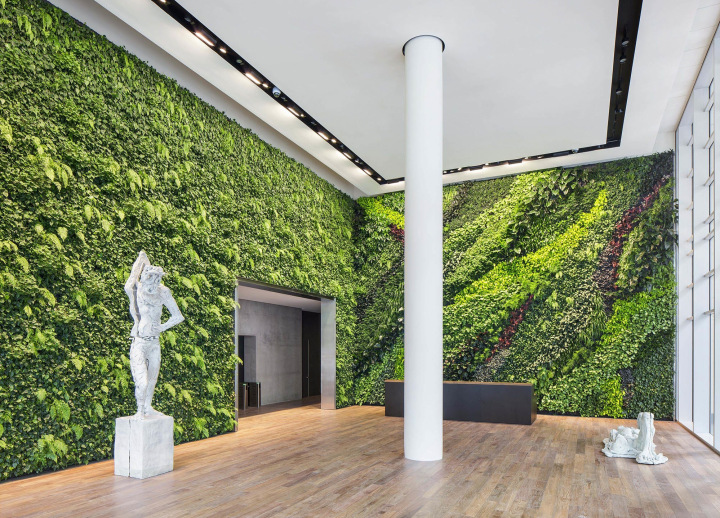The manifold benefits of biophilia at work.

With spring in full bloom, it’s hard to ignore the positive effects of more sunshine, more flowers, more greenery all around. It’s also hard to ignore the urge to get out if you’re stuck inside an office all day.
We reached out to Jennifer Busch, Teknion’s VP of A&D, to find out how Teknion incorporates biophilic theory in their products and why we should all work to include more elements that stoke our biophilia (literally: a love of life, or, according to Busch, “the notion that all people are connected to nature”) in our workspaces.
Simply put, what is biophilia? How would you describe it to a kindergartner? How would you describe it to a harried executive?
Kindergartner: Typically when we think of sustainability we think of OUR impact on nature. And it’s true that each and every one of us affects nature. But the opposite is also true. Nature has a significant and profound impact on every single one of us.
Executive: Biophilia is the notion that all people are connected to nature (a part of nature, not apart from nature) and that we are at our best when we are surrounded by nature, or references to nature. This has great implications for the way we design our interior spaces.
Why is it important to incorporate biophilic elements in the built environment, and in particular, the workplace?
Numerous studies have shown that exposure to nature has positive physiological and psychological benefits. We are at our best when exposed to natural light, views, fresh air, and materials that are derived from or mimic the rich variety of colors, textures, patterns, sounds, and scents provided by nature. These positive associations generate a sense of well-being, which in turn elevates our creativity, our ability to focus, and our levels of productivity.
What are some surprisingly small and easy ways to do it, but at the same time, have the biggest impact?
The best way to incorporate biophilic design into an interior space — and reap the benefits — is to provide access to the outdoors. Healthcare designers have long known this, which is why the concept of the “healing garden” has been so popular in that industry sector.
When climate or real estate conditions prevent this (which is the case more often than not), the best way to introduce biophilic design is to provide democratic access to natural light and views — i.e., open work spaces on the window wall, enclosed work spaces at the core, with glass walls that allow light to travel throughout the floor plan and permit views out the window, even from a distance. This is simply a planning exercise.
Can you share any research/numbers on the positive effects of providing more natural light, fresh air, plants, and other natural elements in the workplace?
There is a great white paper written by Terrapin Bright Green, called “The Economics of Biophilia”. It provides extensive data from numerous studies on how these things produce positive effects. A few takeaways include:
- Ten percent of absenteeism can be attributed to a lack of access to nature.
- Hospitals have seen a 21 percent decrease in pain medication costs for hospital patients with views.
- Schools with daylighting see an 18 percent increase in test scores.
- In general, access to natural light, outdoor views, and ventilation reduces eye strain and relieves mental fatigue.
How does Teknion incorporate biophilic theory in its products?
Biophilic design isn’t about aesthetics or function — it’s a methodology. It’s about bringing the proven benefits of being outdoors into our spaces. Products designed with natural materials or materials that closely mimic natural materials (wood casegoods, for example), products that allow light and views to penetrate an interior space (glass walls), and the rich variety found in Teknion’s palette of materials and finishes all contribute to positive biophilic responses.


[…] definition shared by Natalie Grasso in Work Design Magazine’s April 2016 Issue sums up ‘biophilia” with an unassuming line of […]